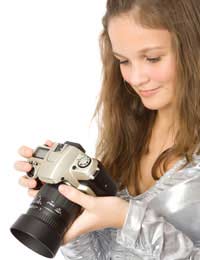Film Camera Maintenance

The number of photographers who continue to exclusively use film cameras is continuing to fall. This is due in part to the increased convenience and lower costs of digital storage, and is partly as a result of the perceived complexities of film cameras. One of the ways in which analogue photography is deemed to be complex is the maintenance of the camera; there is a common misconception that digital cameras require little or no maintenance. While this is far from the truth, it is certainly the case that good maintenance of film cameras is necessary to ensure images of optimum quality and longevity of your equipment.
Mechanical Parts
Film cameras, by definition, have considerably more moving parts than their digital equivalent. This can make maintenance a difficult task, as the working of the camera itself relies on each of these mechanical elements performing their function smoothly. A number of these parts, however, will simply wear out over time. While efficient maintenance can increase their usage, it is highly likely that at some point in your camera's lifetime you may have to replace a non-repairable part such as the film loading spool or the internal mechanism of the wind-on arm. If a part becomes stuck, it is very important that you do not force it. Instead, it is generally best to take the camera to a good repair shop and have them perform the job professionally.There are, however, a number of important cleaning and maintenance tasks that you can perform yourself. A vital investment for any photographer is a good cleaning kit. These are very cheap, and will generally consist of at least a blow-brush, cloth and cleaning fluid. These are multi-purpose tools; all three should be used to keep your lenses clean, while the blow-brush can be used to remove dust particles from the camera body.
When cleaning lenses, you should remove dust particles with the blow-brush frequently. In addition, you should regularly clean the glass surfaces with cleaning fluid and a dust-free lens cloth. You should place the fluid on the cloth, rather than directly onto the lens, and clean the glass in a circular motion. Ensure that you do not leave excess fluid on the lens, as this will cloud your images.


Re: Photography Copyright Law
Hello, My name is Kimberly Wood and I run a business selling movie DVDs, and Blue-Rays. Both music and movies for me have always…
Re: Storing Your Photos Online
Flickr is fine just as a photo site, but plenty of people put pictures in albums on Facebook, for example, which is one way to store…
Re: Developing Your Own Film and Darkroom Basics
Hi, Please send me the details of new set up of digital color lab and having any expenses and cost of…
Re: What is the Copyright on Old Photographs to Use as Calendars?
Hi, I have an old photograph I got at a flea market, (a snapshot) that I want to use…